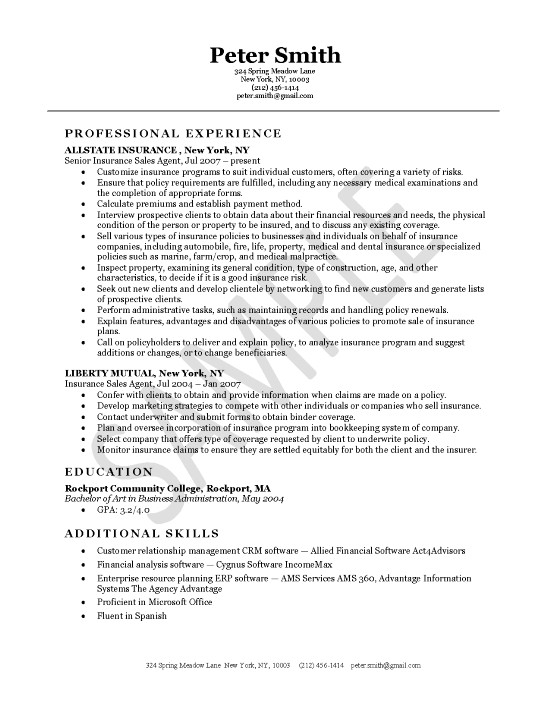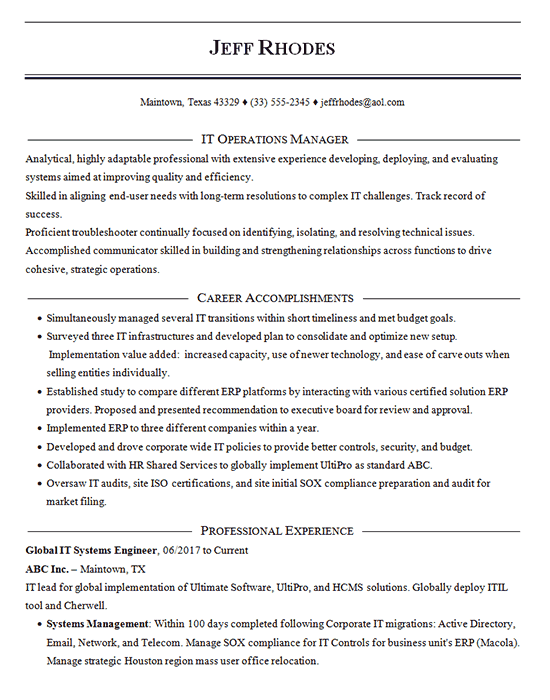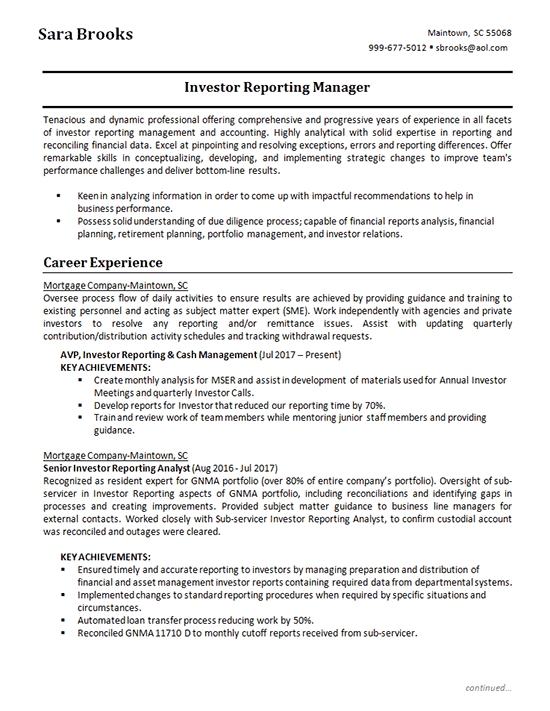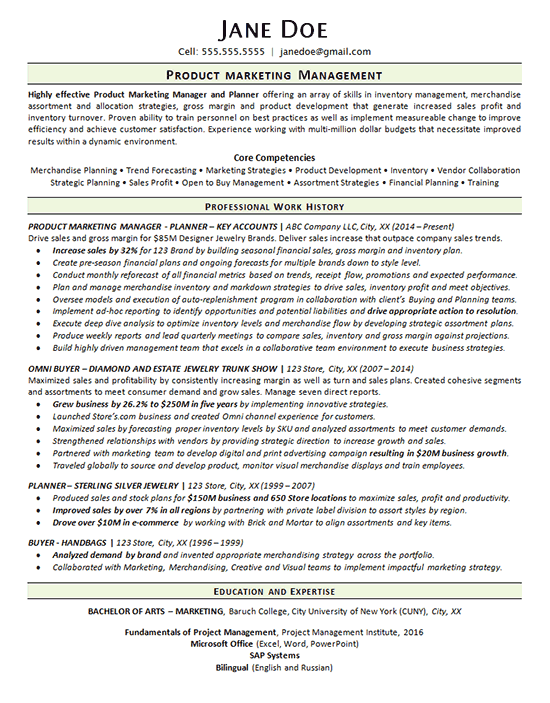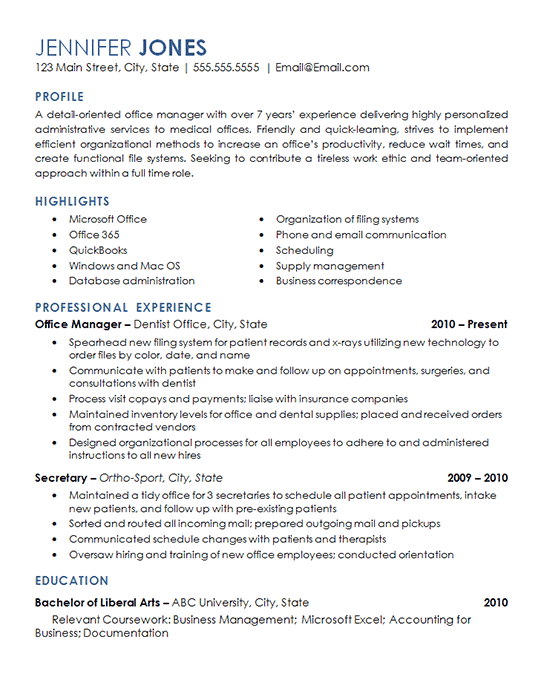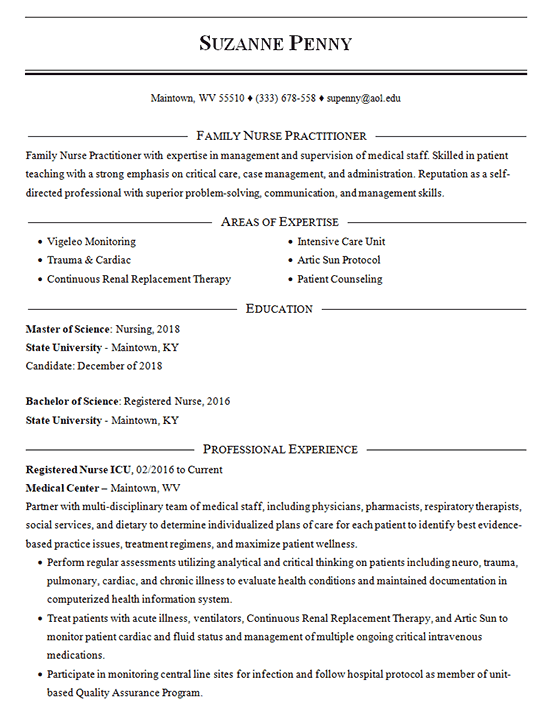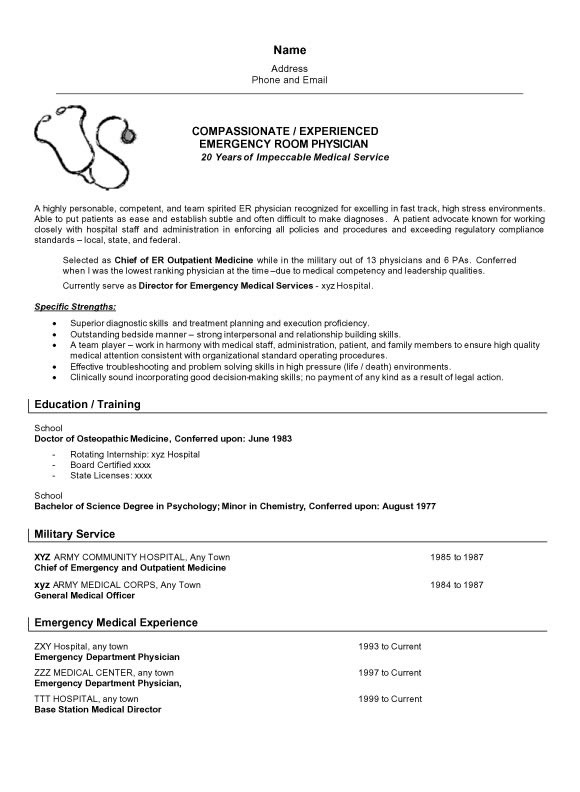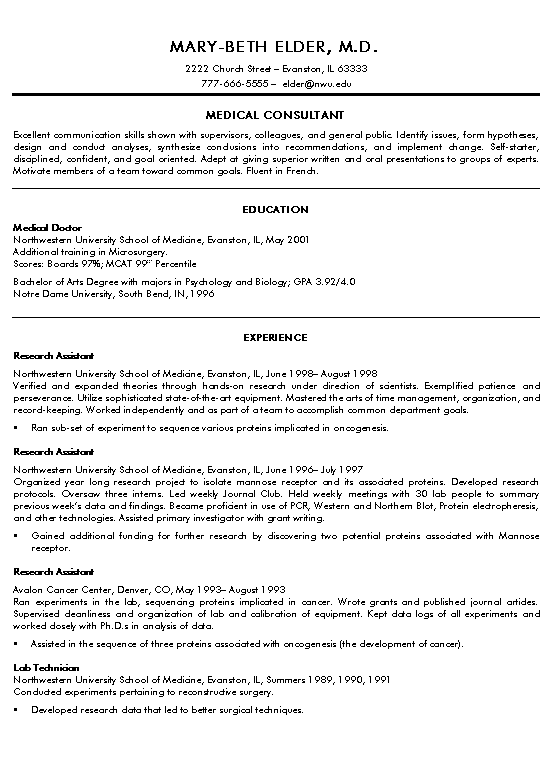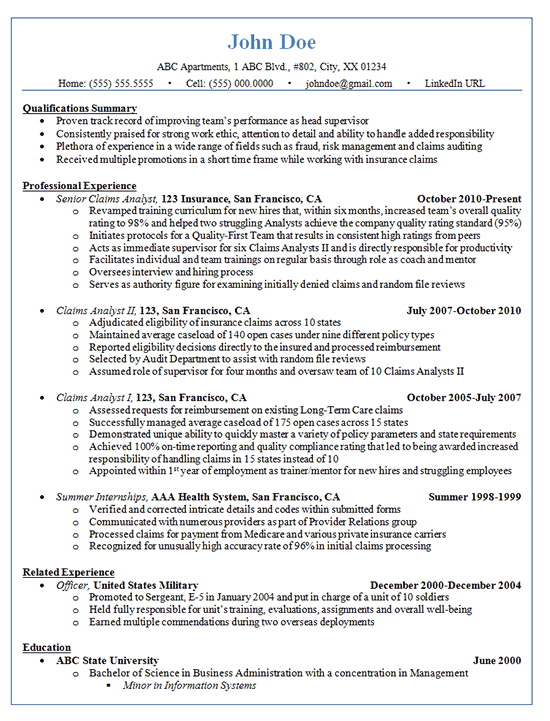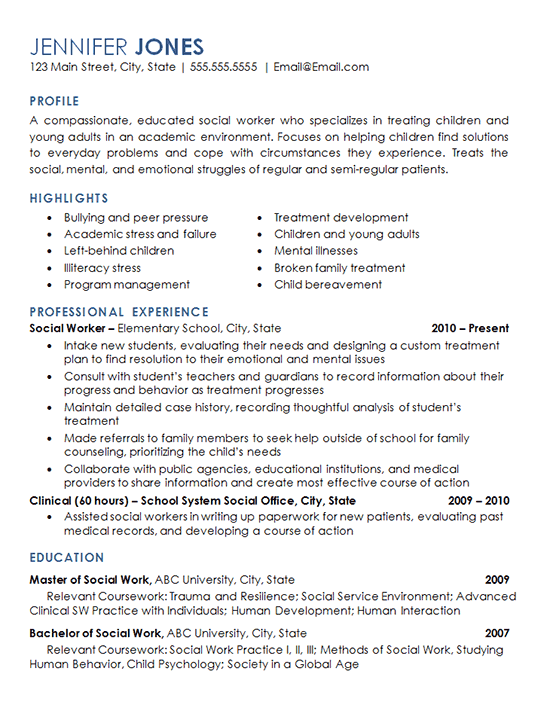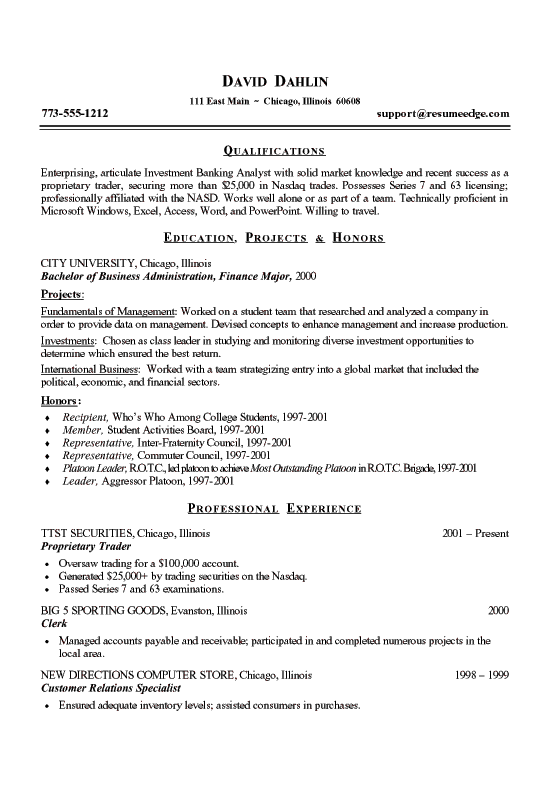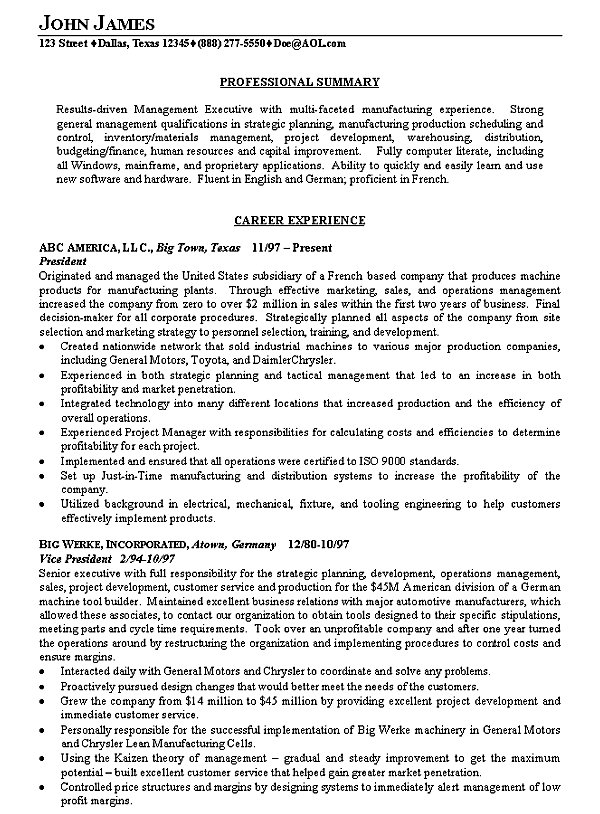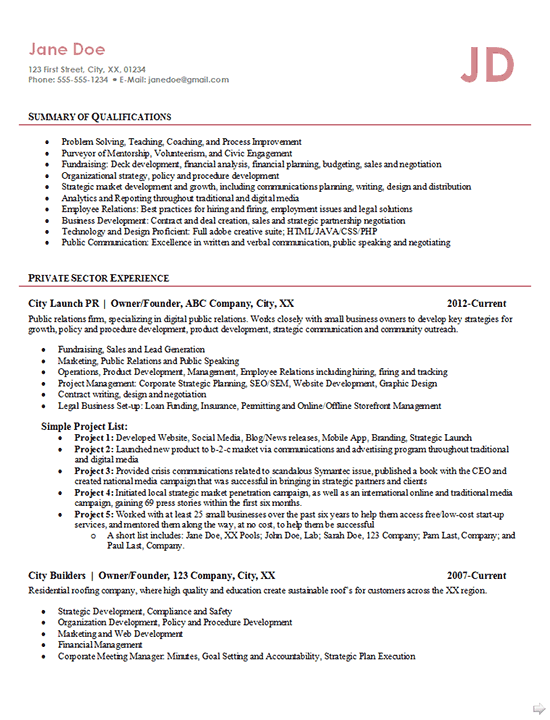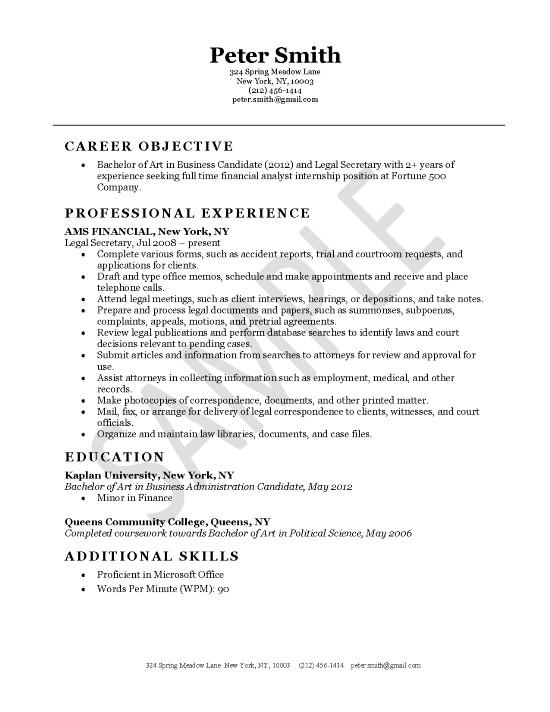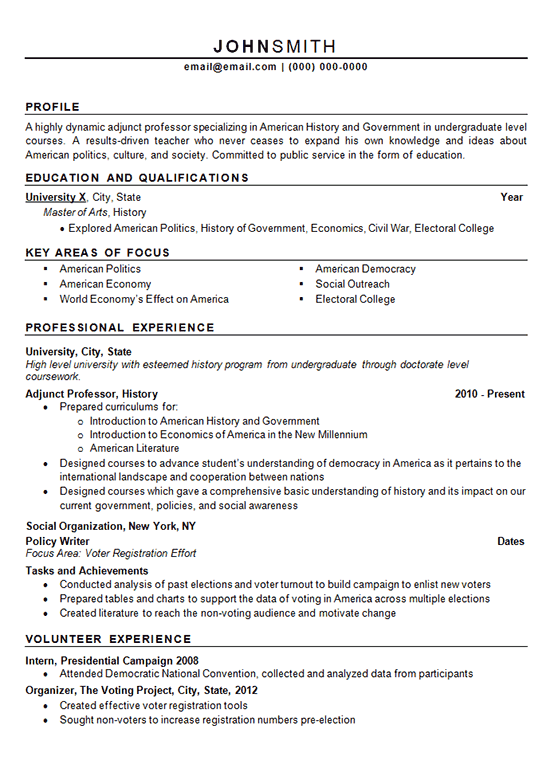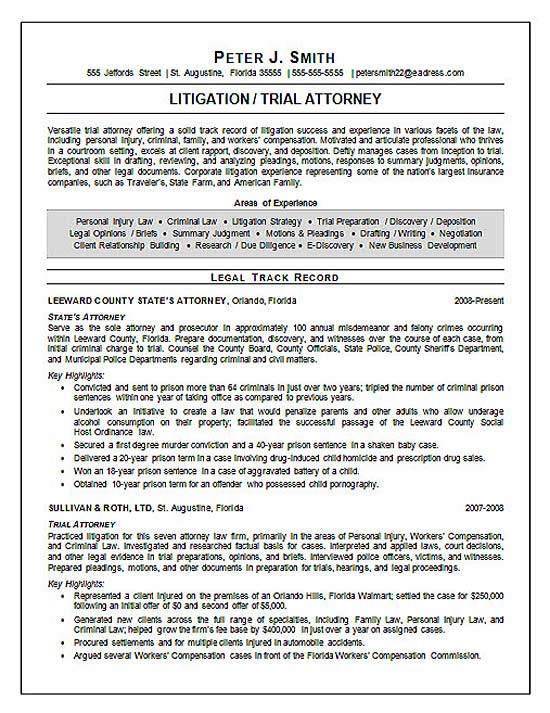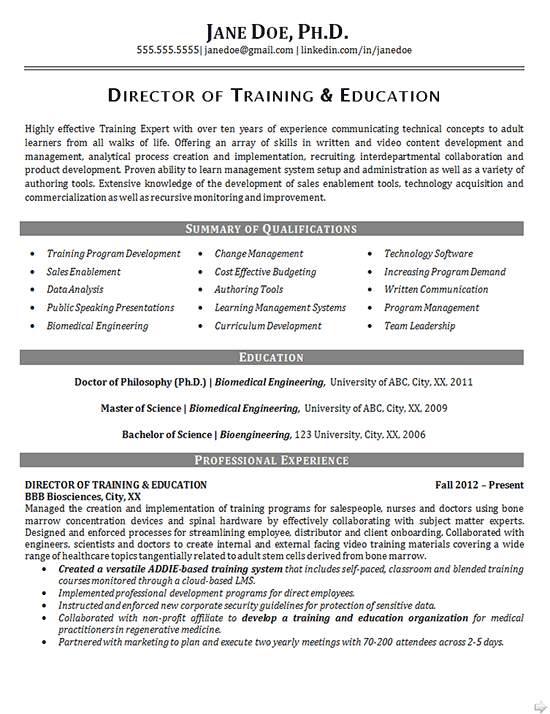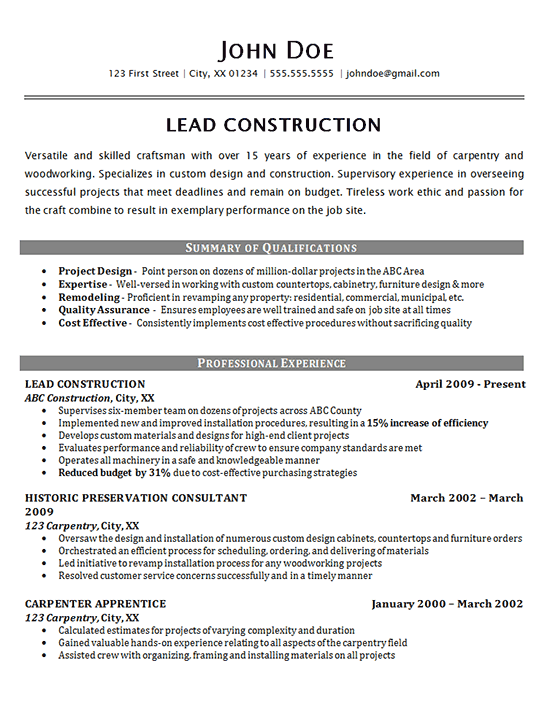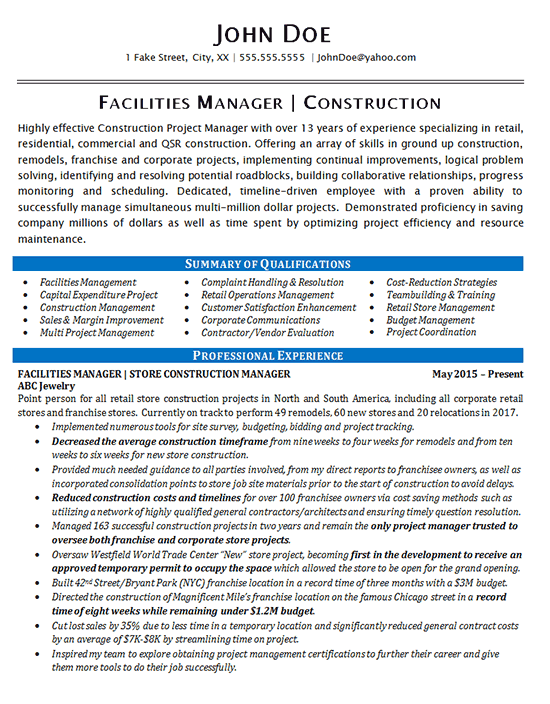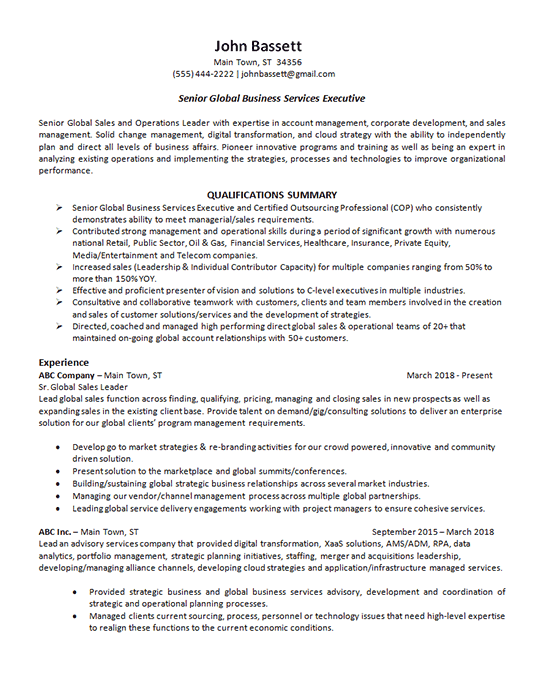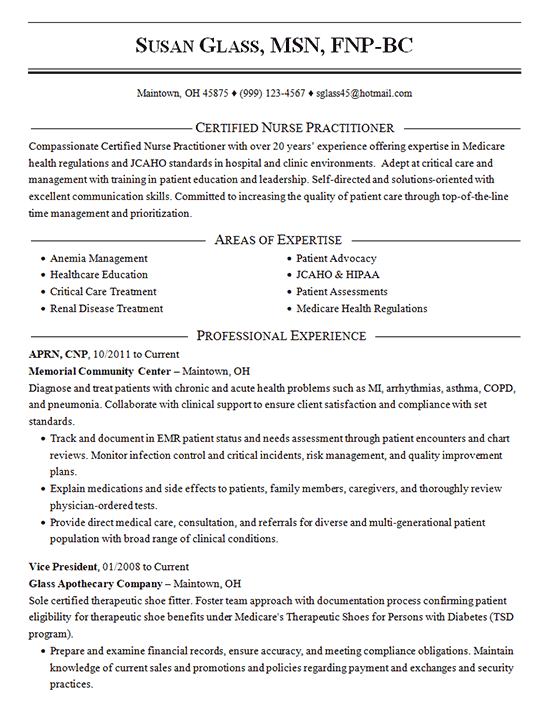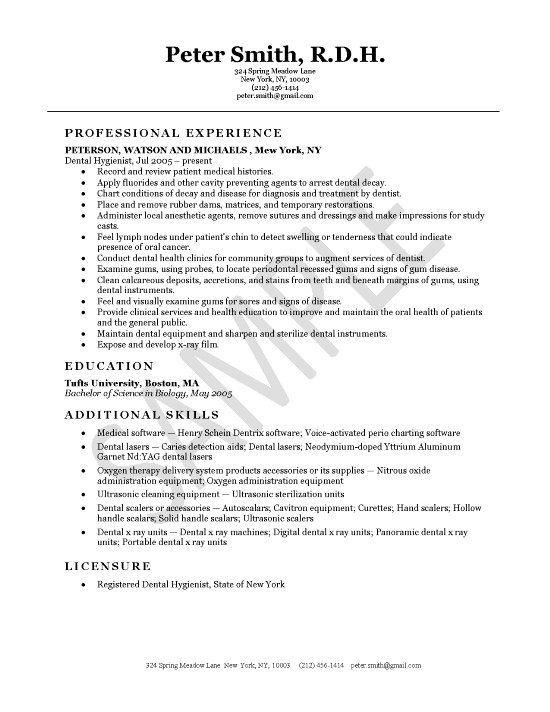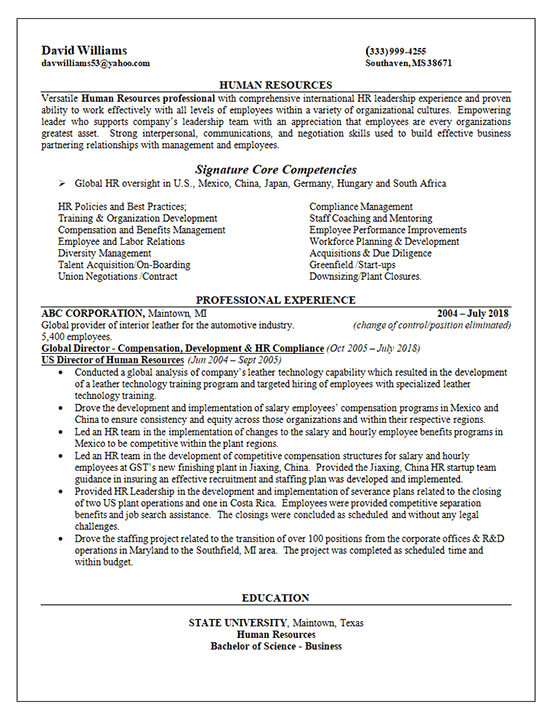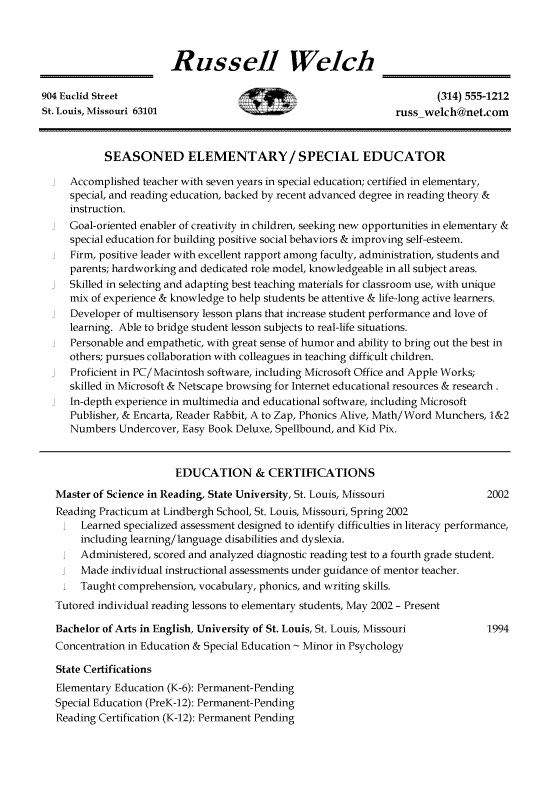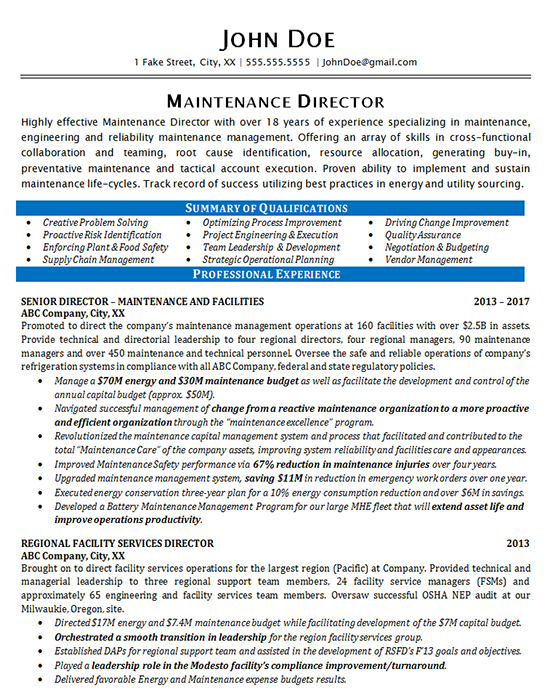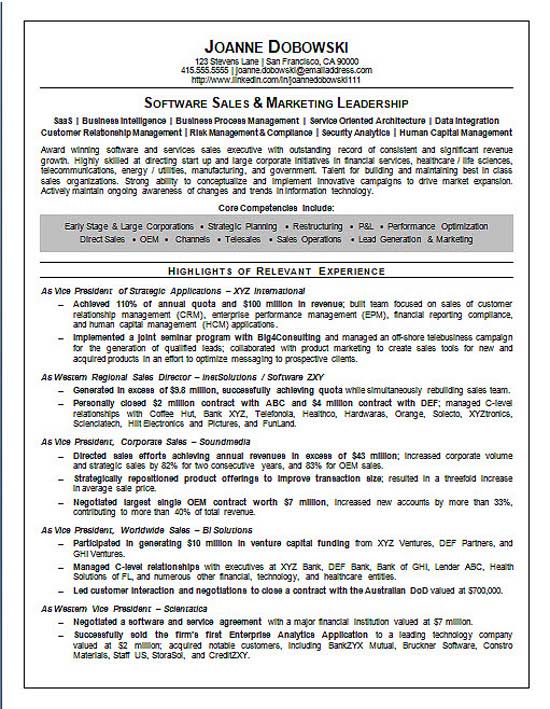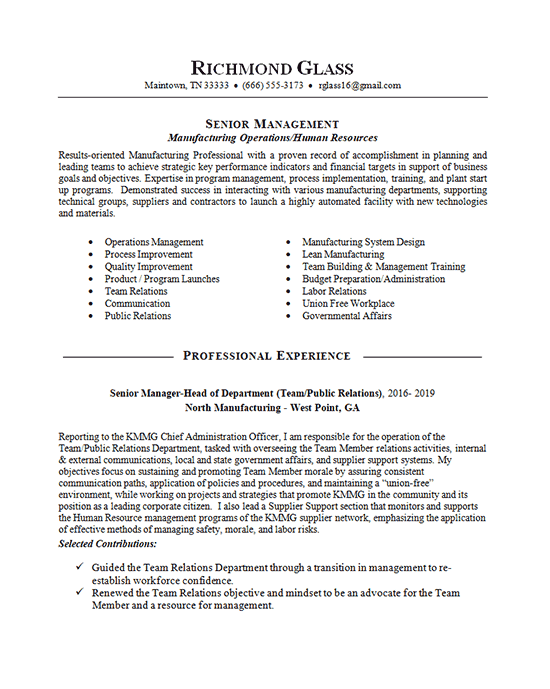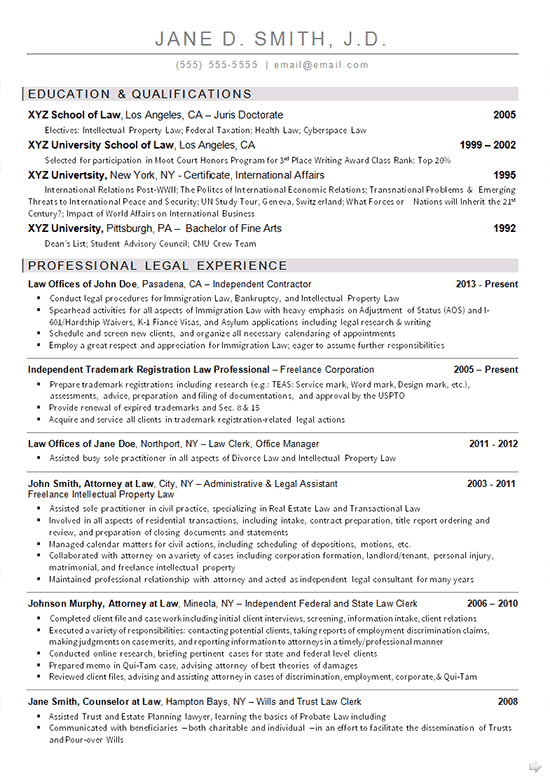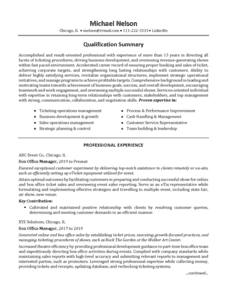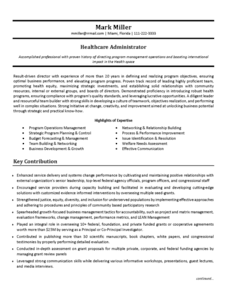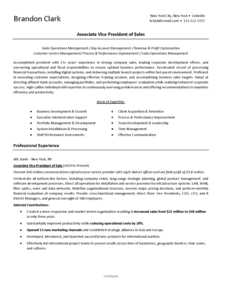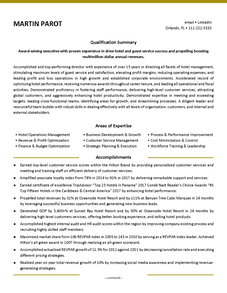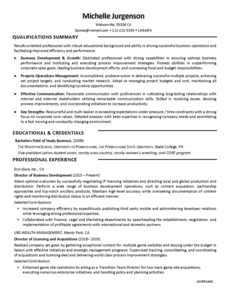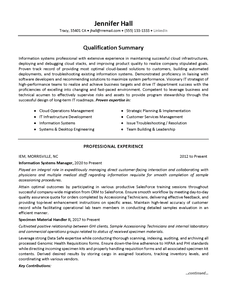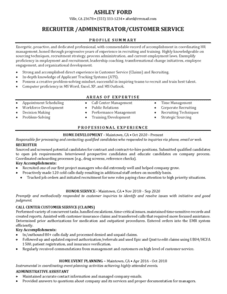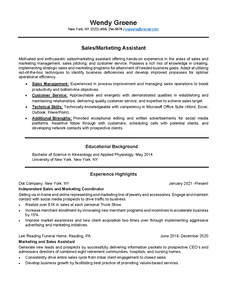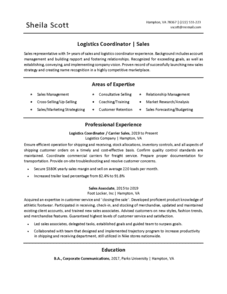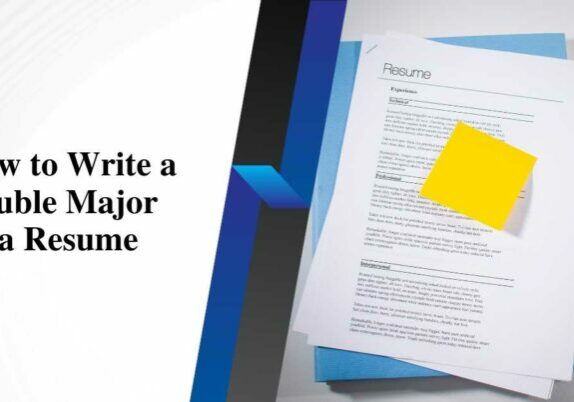Below you will find an example of a resume written in the reverse chronological resume format. This is the most widely used resume format. In this example the resume starts out with job title headlines (Sales Management) to quickly allow the reader to identify the job seeker’s profession.
The job title headlines are followed by a list of qualification highlights (key account management, business development) and a career profile to summarize the job seeker’s 14 year sales career.
The experience section is written in the reverse chronological order, which simply means the most recent job (District Sales Manager) is listed first in the order. The next most recent job information follows the most recent job. At the end of the experience section, you should list your very first job or at least the first related job in your job field. Sometimes, it’s common and acceptable to leave out non-related jobs, part-time jobs or internships. In this example, you can see that the writer grouped their past work history in one statement from 1986 to 1991.
After your work history and job descriptions, you can include Education and Technical Skills sections. You may also include professional affiliations, community service work or volunteer work. In some cases, you can list publications or public speaking events.
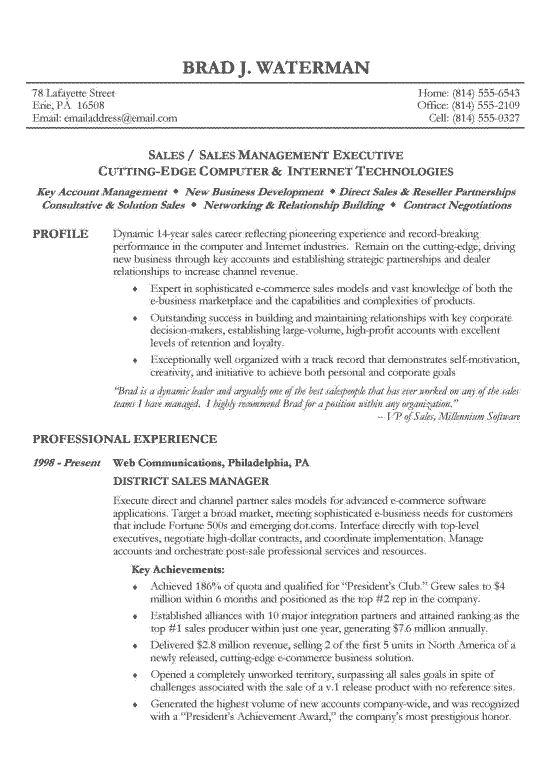
Reverse Chronological Resume Example – Sample
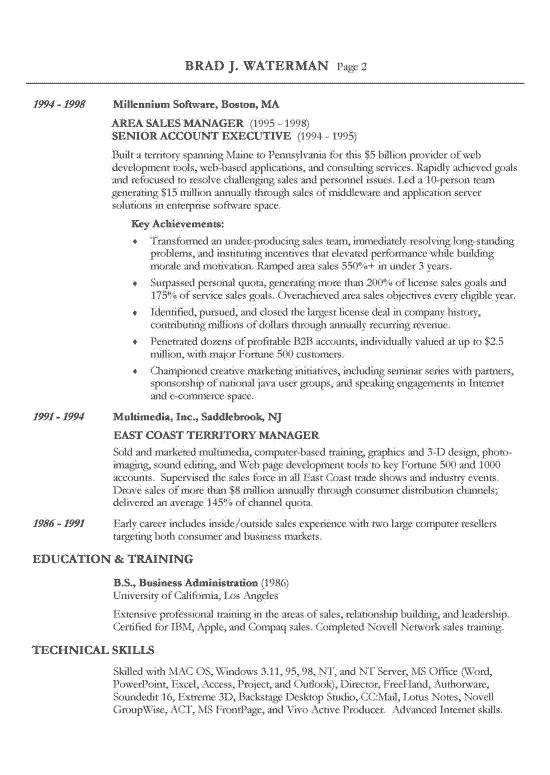
Reverse Chronological Resume Example – Sample
Reverse Chronological Resume Writing Tips
Imagine sitting in a crowded room, surrounded by employers and recruiters. The tension is palpable as they sift through stacks of resumes, searching for the perfect candidate. In this sea of applicants, how can you stand out?
Enter the reverse chronological resume – your secret weapon in the battle for attention. With its clean and organized structure, this format showcases your work experience in reverse order, starting with your current or most recent job. It highlights your career progression and aligns seamlessly with job descriptions.
Whether you’re a seasoned professional with a clear career path or someone looking to make a lasting impression, this kind of effective resume is your ticket to success. With its easy-to-read format for both employers and applicant tracking systems, it ensures your qualifications shine through.
So, if you’re ready to make a statement and secure your dream job, it’s time to embrace the power of the reverse-chronological resume.
What Is a Reverse Chronological Resume?
In a reverse chronological resume, you list your work experience in reverse order, starting with your most recent job, to showcase your career progression and qualifications. This format is widely recognized and preferred by hiring managers and recruiters. It allows them to see your most recent and relevant experience easily.
When creating a reverse chronological resume, it’s essential to use a template that organizes your information in reverse chronological order. Your experience section should start with your most recent job and work backward. Each position should include a summary of your responsibilities and accomplishments, using strong action verbs and quantifiable achievements.
You highlight your career path using reverse chronological order and show consistent employment history. This especially benefits job applicants with a clear career path and extensive professional experience. It lets the hiring manager quickly see your qualifications and how they align with the job description.
This perfect resume format is easy to read and appeals to employers. It effectively showcases your career progression and qualifications, making it a popular choice for job applicants.
Who Is the Reverse Chronological Resume Suitable For?
Ideal for individuals with a consistent work history and several years of professional experience, the reverse chronological format showcases career progression and emphasizes relevant accomplishments. This format is widely recognized and preferred by recruiters, making it easy for them to scan and understand your work history.
Your professional experience section is the heart and mind of the document. It should list your work history in reverse chronological order. Each position should include your job title, company name, and dates worked. Use bullet points to highlight your responsibilities and accomplishments in each role.
The education section should be brief and list your education in reverse chronological order, including your degree, field of study, and year earned. If you have less experience, you can also include specific courses relevant to the job you’re applying for.
To make your resume stand out, use a professional resume template and keep the focus on your work history. Use strong action words and quantify your achievements to show the value you brought to each company. For example, instead of saying ‘managed a team,’ say ‘successfully led a team of 10 employees, resulting in a 20% increase in productivity.’
Remember to use this format if you are a candidate with a consistent work history and career progression. It may not be ideal for recent college graduates or those with frequent job changes or gaps in their work history.
Why and When Would You Write a Reverse Chronological Resume?
The reverse chronological format is the perfect choice when you want to showcase your career progression and highlight your relevant accomplishments. Hiring staff and recruiters widely recognize and prefer This popular resume format.
It lists your work experience in reverse chronological order, starting with your latest job and working backward. By organizing your work history this way, you can easily demonstrate your career growth and match the job descriptions of your previous positions.
This format is especially beneficial for candidates with consistent careers and no significant gaps in their employment history. It is also ideal for those with several years of professional experience in a specific industry.
The structure of this format includes a heading, career summary, skills section, work history, education, and other relevant resume sections. The work experience section is the heart and mind of the resume, and it should be optimized by using bullet points to describe your primary duties, responsibilities, and accomplishments in each position.
By using the reverse chronological order, your most recent job will be at the top, immediately grabbing the reader’s attention. This format lets you showcase your most relevant achievements and skills, making it easier for HR staff to quickly scan and identify your qualifications. To make your work history stand out, use simple fonts and bold text to demonstrate prominence. Remember to quantify your achievements to show your value and contributions in each role.
Overall, the reverse chronological resume format effectively highlights your career progression and qualifications clearly. It is easy to read, appeals to employers, and is ATS-friendly, making it less likely to encounter scanning issues. If you have a solid work experience and achievements foundation, this is the best format to present your professional and educational accomplishments.
How Do You Format a Reverse Chronological Resume?
To format your resume to highlight your career progression and qualifications, organize your years of work experience from your most recent job to your earliest position. This format is widely recognized and preferred by recruiting managers and recruiters. It is the most common and best resume format recommended for candidates with extensive professional experience and a clear career path.
In the reverse-chronological order resume format, begin with a heading that includes your contact information, followed by a career summary to highlight your skills and abilities. The skills section should include at least six hard and soft qualifications using keyword phrases from the job description.
In the work history section, list your past positions in reverse chronological order, with the most recent job listed first. Use bullet points to describe your primary duties and responsibilities, incorporating action verbs and tangible accomplishments. Highlight how your skills were utilized in each position.
This format allows recruiters to scan and understand your professional and educational accomplishments quickly. It emphasizes your career progression and qualifications, making it easier for employers to match your skills to the job requirements.
Keep your resume concise and use a simple font to ensure easy readability. Remember to save your resume as a PDF or DOC file, and avoid using outdated information. Following these guidelines, you can create a professional resume that showcases your skills and experiences.
What Is the Difference Between a Chronological and A Functional Resume?
The main distinction between chronological and functional resumes is how they highlight your work experience and skills.
A reverse chronological resume follows a chronological structure, listing your work experience in reverse chronological order. This type of resume is the most common and preferred format by hiring managers and recruiters. It emphasizes your career progression and shows a consistent employment history.
On the other hand, a functional resume prioritizes your skills and abilities rather than your work history. It is best suited for individuals with gaps in their career history, recent college graduates, or those changing industries. The functional resume format allows you to showcase your relevant skills and qualifications, even if they were acquired through non-traditional work experiences.
While both chronological and functional resumes have advantages, the reverse chronological resume is generally recommended for most job seekers, as it is easier to read, familiar to employers, and highlights your professional experience and contributions.
Conclusion
In conclusion, a reverse chronological resume is preferred for job applicants with extensive professional experience and a clear career path. It highlights career progression and is easy to read for both employers and applicant tracking systems.
However, it’s not recommended for recent college graduates or those with frequent industry changes or gaps in their career history.
One interesting statistic to consider is that 98% of hiring staff prefer the reverse chronological format, emphasizing the importance of presenting your work experience in a clear and organized manner.

